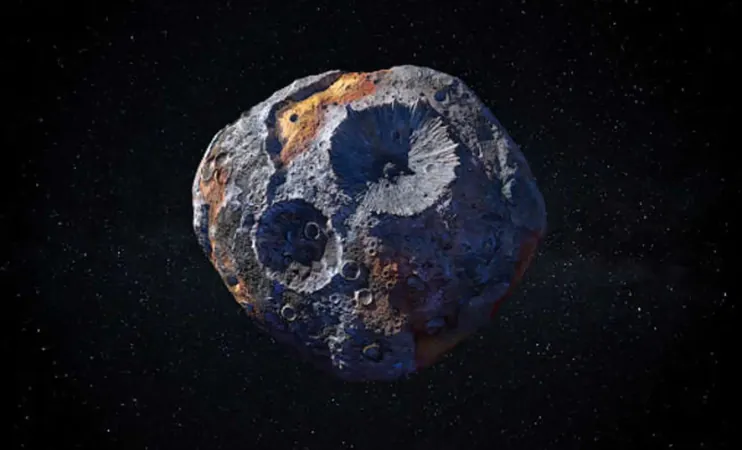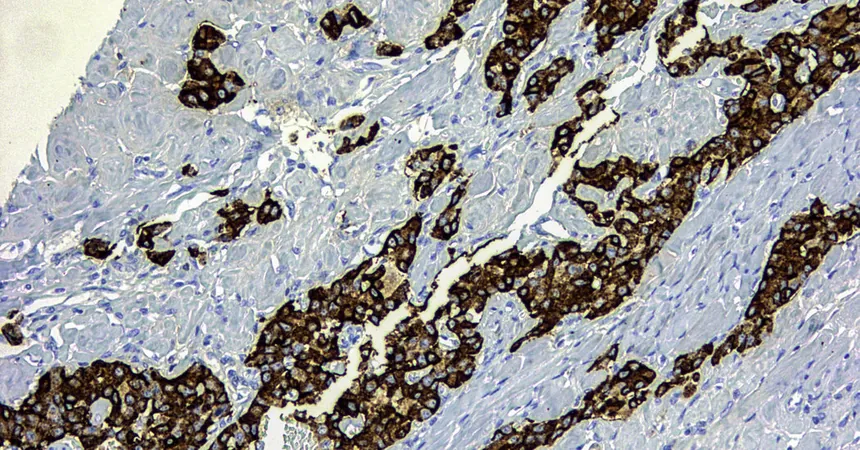
NASA's Psyche Mission: The Quest for a $10 Quintillion Asteroid
2024-11-23
Author: Kai
NASA's Psyche Mission Overview
NASA's Psyche Mission, which launched on October 13, 2023, is on an ambitious journey to explore the metallic asteroid 16 Psyche, a body valued at a staggering $10 quintillion. This could hypothetically turn every person on Earth into a billionaire! This mission is groundbreaking, marking the first time a spacecraft will visit a world composed primarily of metal rather than rock or ice. Scientists are eager to uncover the mysteries surrounding Psyche's origins—secrets that could reveal key insights into the formation of planetary bodies in our solar system.
A Scientific Treasure Trove Awaits
16 Psyche resides in the asteroid belt located between Mars and Jupiter and is believed to be the exposed core of a failed planet, featuring a unique composition rich in iron, nickel, and even traces of gold. Its dimensions stretch over 140 miles in diameter, making it one of the largest asteroids known, and its metallic nature makes it a natural laboratory for researchers.
The spacecraft, expected to arrive at Psyche in 2029, will not only investigate the asteroid’s rich materials but could also illuminate how terrestrial planets—including our own—formed and evolved. As Benjamin Weiss, an MIT planetary science professor, noted, 'This will be the first time we've sent a mission to a body that is not mostly rock or ice, but metal. Psyche could tell us something pivotal about how planets formed.'
The analyses performed on Psyche could deepen our understanding of our own planet's elusive inner core, which remains inaccessible due to the layers of rock that encapsulate it. As Nicola Fox, associate administrator for NASA's Science Mission Directorate, stated, 'By studying asteroid Psyche, we hope to better understand our universe and our place in it.'
Advanced Technologies Pave the Way
Covering over 1.5 billion miles during its journey, the Psyche spacecraft embodies cutting-edge engineering with advanced solar-electric propulsion systems powered by hall thrusters that ionize xenon gas. This technology allows for efficient long-distance travel while conserving precious fuel—a game-changer for deep space exploration.
Additionally, the Psyche spacecraft is equipped with innovative tools like the Deep Space Optical Communication (DSOC) system, promising to transmit data back to Earth at speeds up to 100 times faster than traditional radio communications. Such advancements could enhance the speed and reliability of data transmission for future missions as well.
Instruments are also included to carry out groundbreaking science: gamma-ray spectrometers, magnetometers, and multispectral imagers will help map Psyche’s surface, analyze its materials, and search for remnant magnetic properties. The detection of a magnetic field could validate theories about its origin as a planetary core.
The Journey Ahead
Following its launch, the Psyche mission will perform a gravity-assist maneuver around Mars in 2026, which will help adjust its trajectory and speed as it heads towards the asteroid belt. Upon reaching Psyche, the spacecraft will orbit the asteroid for 26 months, conducting in-depth studies that may forever change our understanding of planetary core formations.
This exploration conjures a fascinating dialogue about the potential value of the metals contained within Psyche. Lindy Elkins-Tanton, the mission's lead scientist, expressed curiosity about the asteroid's substantial worth, teasing the idea of resource control reminiscent of how diamond markets are maintained. 'What if you decided you were going to bring it back and you were just going to solve the metal resource problems of humankind for all time?' Such musings, while hypothetical, highlight Psyche's critical scientific importance and the public's fascination with space exploration.
As the Psyche mission progresses, it promises to unveil a wealth of knowledge, potentially revolutionizing our understanding of planetary formation and the origins of our solar system. Space enthusiasts and scientists alike eagerly await what discoveries await us on this metallic asteroid.



 Brasil (PT)
Brasil (PT)
 Canada (EN)
Canada (EN)
 Chile (ES)
Chile (ES)
 España (ES)
España (ES)
 France (FR)
France (FR)
 Hong Kong (EN)
Hong Kong (EN)
 Italia (IT)
Italia (IT)
 日本 (JA)
日本 (JA)
 Magyarország (HU)
Magyarország (HU)
 Norge (NO)
Norge (NO)
 Polska (PL)
Polska (PL)
 Schweiz (DE)
Schweiz (DE)
 Singapore (EN)
Singapore (EN)
 Sverige (SV)
Sverige (SV)
 Suomi (FI)
Suomi (FI)
 Türkiye (TR)
Türkiye (TR)